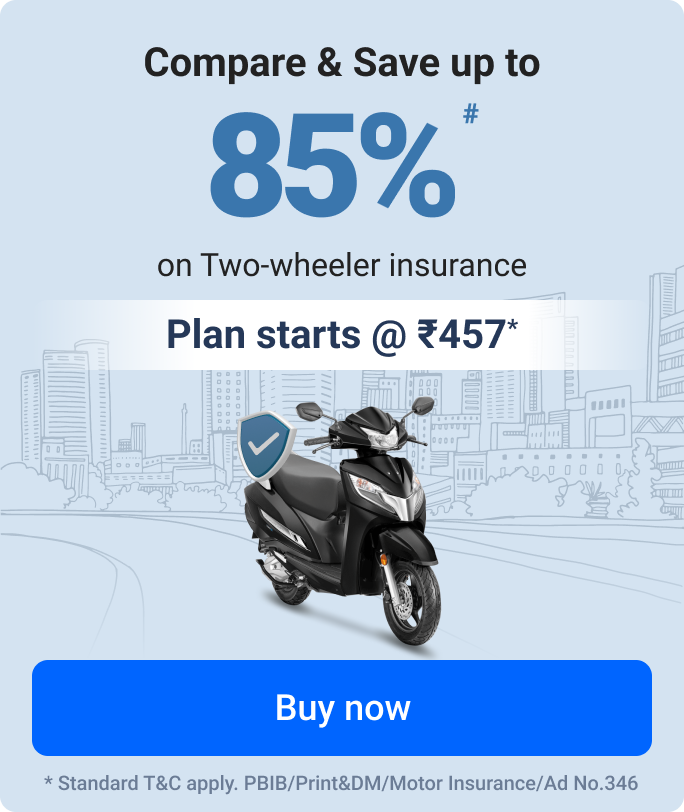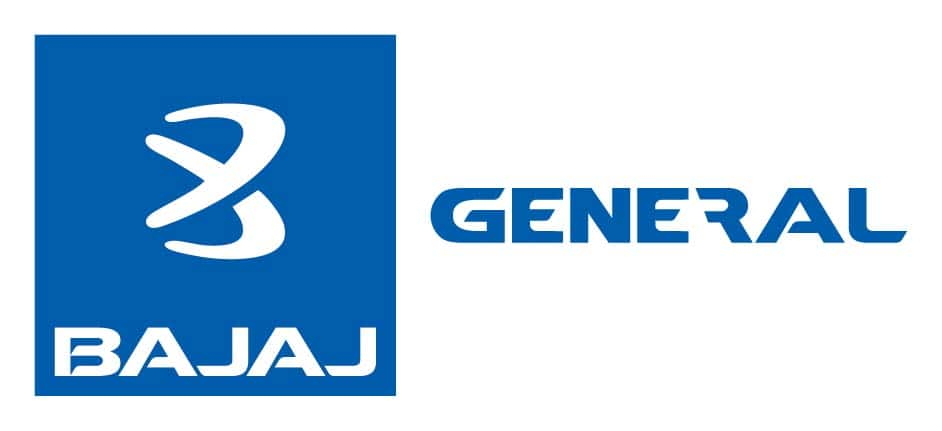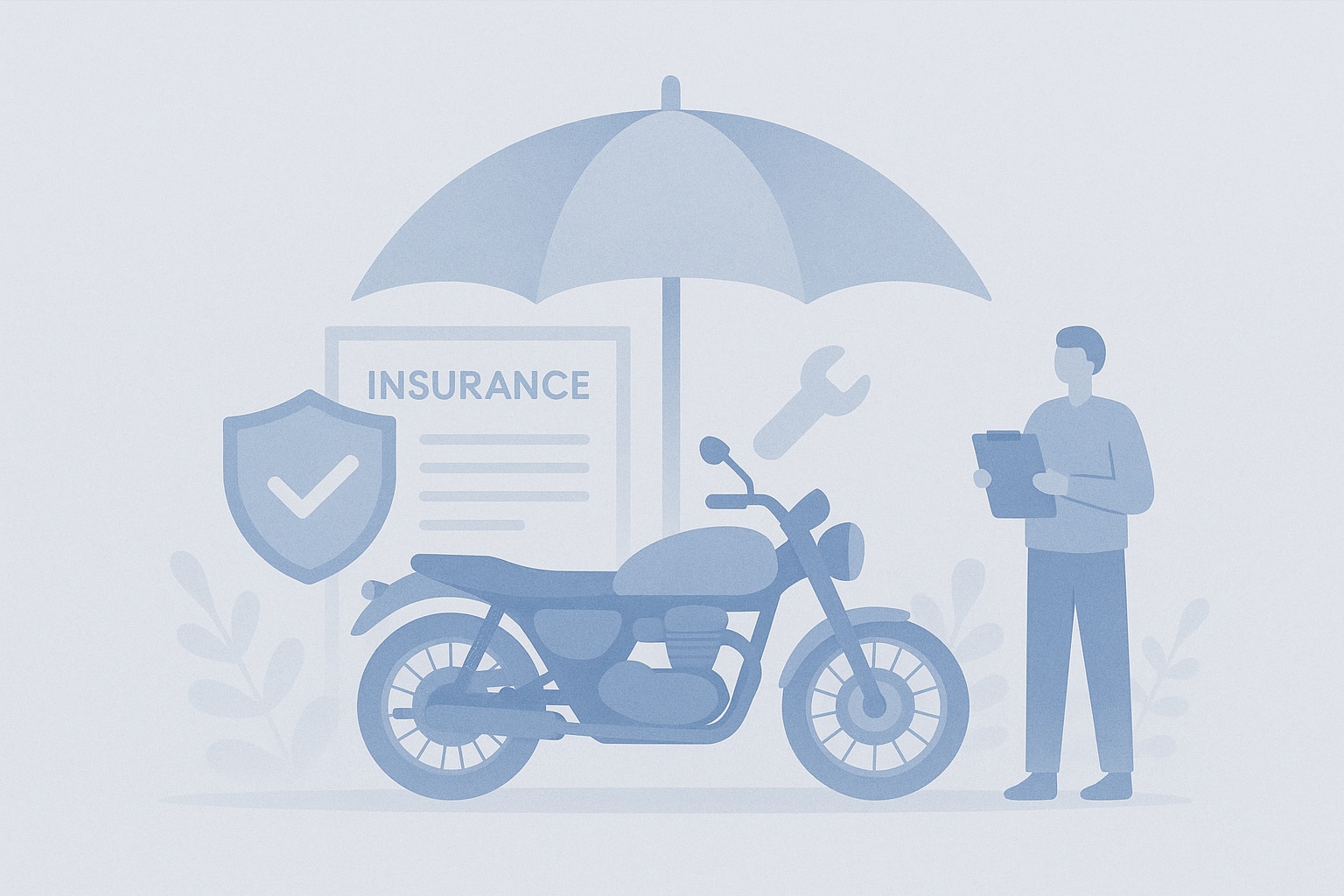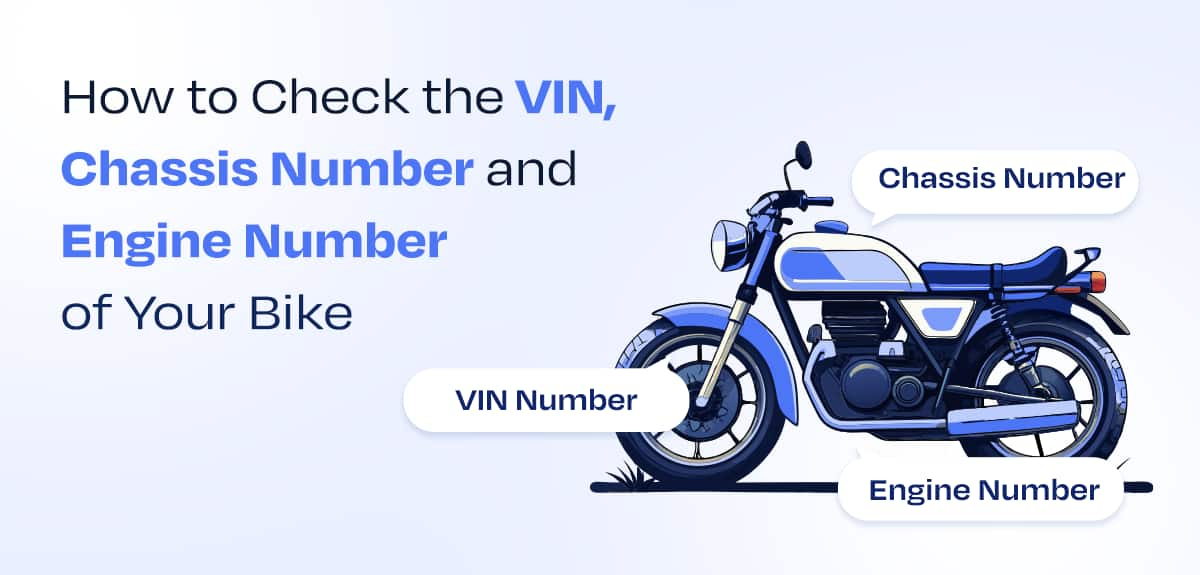Key Differences Between IDV and Market Value in Two Wheeler Insurance
Whenever you buy or renew your bike insurance policy, two terms are quite confusing: Insured Declared Value (IDV) and Market Value (MV). Both of them define your bike's worth, but play a different role in insurance coverage and determining your final premium. In this article, you will understand the differences between these two and avoid paying extra or losing money during claims.
What is Insured Declared Value (IDV) in Bike Insurance?
When you buy two wheeler insurance, an IDV or Insured Declared Value is the maximum claim payout amount that your insurer agrees to pay if your bike is stolen or declared a total loss. It is calculated as the manufacturer's price minus depreciation based on the age of the vehicle.
IDV directly impacts your bike insurance premium in the following ways:
Higher IDV = higher premium but higher coverage.
Lower IDV = lower premium but smaller claim payout.
To know the step-by-step calculation process of the IDV, check our article on How IDV is Calculated in Two wheeler insurance
What is Market Value in Bike Insurance?
The Market Value (MV) of a bike is the price you would get if you sell it in its current condition in the second-hand market. This usually depends upon various factors, such as mileage, usage, demand for a particular model, and overall condition. This Market Value (MV) fluctuates with demand, condition, and resale trends.
It is not used directly to calculate bike insurance premiums, but it helps assess whether your IDV is realistic.
IDV vs Market Value in Two Wheelers
The table below highlights the difference between IDV and Market Value in two-wheelers:
| Aspect | IDV | Market Value |
| Definition | It is the maximum payout given to the policyholder in case of theft or total loss by the insurer. | The bike's resale value usually prevails in the second-hand or used-bike market. |
| Purpose | It is the term used that helps in determining the coverage & premium. | It is used for resale or trade in the second-hand automobile market. |
| Calculation | It is based on the manufacturer's price minus depreciation. | It is based on demand, condition, mileage, modifications, etc. |
| Impact on Premium | Direct impact on the premium. | No direct relation in the market value. |
| Flexibility | It can be changed up to an extent. | No flexibility, as it is totally market-driven. |
| Relevance | It is crucial for comprehensive bike insurance | It is crucial for resale or used-bike deals. |
How Depreciation Affects IDV in Two Wheeler Insurance?
Depreciation is another factor that helps in determining the IDV of a bike. Let's check out the applied rate of depreciation depending on the age of the vehicle:
| Age of the bike | Applicable Rate of Depreciation |
| 1-year | 20% |
| 2-years | 30% |
| 3-years | 40% |
| 4-years | 50% |
| 5+ years | Determined by the insurer after bike inspection |
Why Choosing the Right IDV Matters in Two wheeler insurance?
Here are a few reasons why choosing the right IDV is important in two wheeler insurance:
When you select a higher IDV:
- You pay a higher premium unnecessarily.
- Claim settlement will still be restricted to market-adjusted value.
When you select a lower IDV:
- Premium is cheaper, but it is the case of underinsurance.
- Claim payout may not be enough to replace your bike.
Hence, choosing the right IDV matters the most, and it is usually close to your bike's current market value, adjusted with applicable depreciation.
You can also check out how both IDV and NCB affect your bike insurance premiums in our article What is IDV and NCB in Two wheeler insurance
Tips to Choose the Right IDV
Choosing the right IDV ensures balanced coverage, neither underinsured nor overpaying on premiums. Here are a few tips that you can use to select the right IDV:
- Compare the insurer's recommended IDV with the market resale value of the same bike model.
- Avoid reducing IDV to lower your premium.
- Include the cost of accessories/modifications.
- Review IDV during the bike insurance renewal, as it is adjusted based on the bike's age.
- Check the depreciation chart before finalising the last IDV.
FAQs –IDV Versus Market Value in Bike Insurance
-
Q: Is IDV the same as the bike's market value?
Ans: No, IDV is the insured value after depreciation, while market value is the resale price of the bike. Both of them are related to bikes but serve different purposes. -
Q: Is the IDV value important in bike insurance?
Ans: Yes, it is an important value which helps in determining overall premium and maximum claim amount in case of total loss or theft. -
Q: Is a higher IDV value better?
Ans: Not always. It raises your premium without offering any extra benefit during claims. -
Q: Should I choose a lower IDV to save money?
Ans: No, choosing a lower IDV means cheaper premiums but lower claim payout, leading to underinsurance. -
Q: Can I negotiate the IDV of my bike?
Ans: Usually, insurers allow the selection of IDV within a defined range. -
Q: How much IDV to choose for a bike?
Ans: After applying depreciation, choose an IDV close to your bike's current market value. -
Q: Does IDV reduce after a claim?
Ans: IDV is reduced only due to the effect of applied depreciation each year, not because of a claim.
^The buying/renewal of insurance policy is subject to our operations not being impacted by a system failure or force majeure event or for reasons beyond our control. Actual time for a transaction may vary subject to additional data requirements and operational processes.
*TP price for less than 75 CC two-wheelers. All savings are provided by insurers as per IRDAI-approved insurance plan. Standard T&C apply.
*Rs 538/- per annum is the price for third party motor insurance for two wheelers of not more than 75cc (non-commercial and non-electric)
#Savings are based on the comparison between the highest and the lowest premium for own damage cover (excluding add-on covers) provided by different insurance companies for the same vehicle with the same IDV and same NCB.
*₹ 1.5 is the Comprehensive premium for a 2015 TVS XL Super 70cc, MH02(Mumbai) RTO with an IDV of ₹5,895 and NCB at 50%.
*₹457/- per annum (₹1.3/day) is the price for third-party motor insurance for private electric two-wheelers of not more than 3KW (non-commercial). Premium is payable annually. The list of insurers mentioned is arranged according to alphabetical order of the names of insurers respectively. Policybazaar does not endorse, rate or recommend any particular insurer or insurance product offered by any insurer. The list of plans listed here comprise of insurance products offered by all the insurance partners of Policybazaar. For the complete list of insurers in India, refer to the Insurance Regulatory and Development Authority of India website: www.irdai.gov.in

























